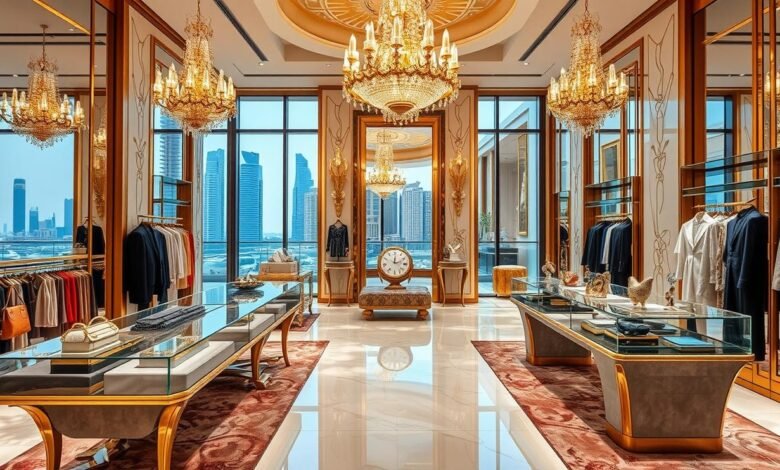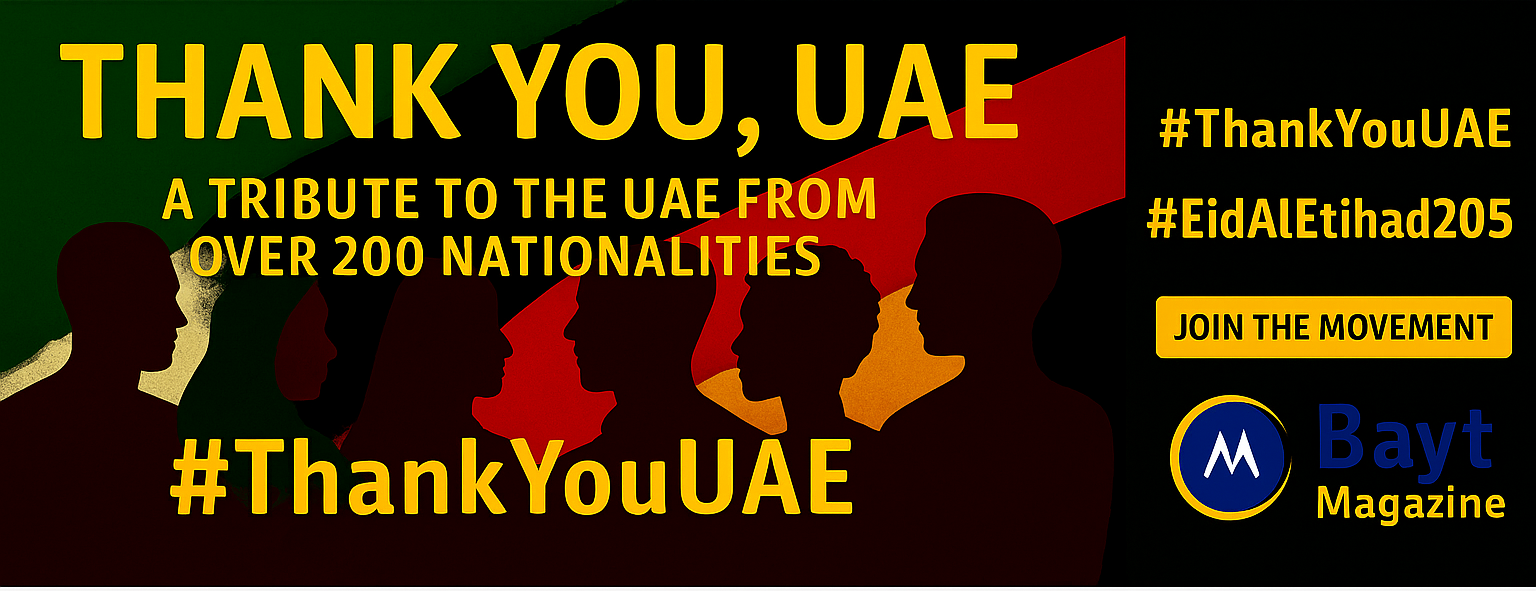
How to Win in GCC Luxury Market: Essential Steps for 2025 and Beyond
The Middle East’s luxury market has reached $15.85 billion. Market experts predict this number will surge to $30-35 billion by 2030.
GCC’s luxury goods market showcases this promising future clearly. Fashion dominates at $5.2 billion, while watches and jewelry follow closely at $5.1 billion. Local shoppers now make 60% of their luxury purchases in their home countries. This percentage has risen sharply since the pandemic.
The GCC has earned its reputation as the ‘Mecca of Malls.’ High government spending paired with low taxes creates perfect conditions for luxury retail to thrive. The region’s shift from traditional luxury items to immersive experiences opens new doors for adaptable brands.
This piece will show you how to discover the full potential of GCC’s booming luxury market and help your brand succeed.
Understanding the GCC Luxury Market Landscape

Image Source: LinkedIn
The GCC luxury market shows remarkable growth. The total market value has reached USD 16.9 billion in 2024 and will expand to USD 37.6 billion by 2033, showing a resilient CAGR of 8.79%. This is a big deal as it means that the GCC market grows twice as fast as the global luxury industry.
Key statistics and growth trends
The fashion segment dominates the GCC luxury landscape at USD 5.2 billion, with watches following at USD 5.1 billion. High-end fashion grew by 10% in 2023, this is a big deal as it means that it outperformed the global average of 4%. More importantly, the skincare category has become the fastest-growing segment in the beauty market, with an impressive 30% increase.
Young population drives this growth—about 75% of GCC’s people are working age. On top of that, the region’s high concentration of ultra-high-net-worth individuals (UHNWIs) powers luxury consumption.
Unique characteristics of each GCC country
Each GCC nation brings unique market opportunities. Saudi Arabia emerged as the biggest growth market for luxury brands in 2022. Luxury sales could reach USD 22.2 billion by 2024, with an annual growth rate of 7.2%. So many brands have set up their regional headquarters in the Kingdom.
The UAE, especially Dubai, remains the region’s main luxury hub. The country’s mature retail infrastructure attracted about 4,000 HNWIs in 2022. Qatar’s luxury market has expanded significantly since the opening of Place Vendome mall, which houses major luxury brands like Gucci, Prada, and Dior.
Major luxury retail hubs and destinations
World-class luxury retail destinations dot the region. Dubai Mall and Mall of the Emirates in UAE serve as flagship locations where luxury brands first enter the region. Place Vendome in Qatar has become a vital luxury retail destination.
Saudi Arabia’s luxury retail scene grows faster with iconic lifestyle destinations like Amaala and The Red Sea Project. The GCC market represents only 3% of global luxury retail presence but shows huge potential for expansion.
Conducting Effective Market Research

Image Source: Chalhoub Group
The GCC’s competitive luxury market demands solid market research that leads to success. Luxury brands must understand unique consumer patterns and market competition before they tap into this profitable market.
Identifying target consumer segments
The GCC luxury market demands precise consumer grouping strategies. The region’s young population presents a prime opportunity, as working-age individuals make up about 75% of the total population. The UAE stands out by attracting wealthy individuals, with nearly 4,000 HNWIs choosing it as their home in 2022.
Studies show that GCC luxury buyers value individual-specific experiences, and 39% strongly prefer personal connections with brand representatives. Notwithstanding that, many brands lag behind because their “building a connection” scores are 16 percentage points below global measures. Young GCC consumers now lean toward ethical consumption and sustainability among other traditional luxury qualities.
Analyzing competitor strategies
Successful companies adapt their strategies to match local priorities. Research shows that top luxury brands understand the need to blend their offerings with local traditions. Local luxury brands like L’Afshar and The Giving Movement have found success by combining cultural heritage with creative design.
Brands should learn about how competitors create exclusive experiences. GCC consumers now value meaningful interactions more than just owning luxury items. Advanced technology powers successful strategies through AI-based suggestions and seamless channel integration.
Working with local market research firms
Local research specialists are a great way to get cultural insights that global agencies might overlook. Companies like Systematic Market Research Consultancy and Research Konnection use various methods to provide detailed understanding of GCC markets.
These regional partners help brands direct through cultural subtleties and regulations while connecting them with local consumer groups. Regional experts can spot hidden market opportunities in a variety of GCC countries.
Navigating Regulatory Requirements

Image Source: Avyanco
Luxury brands need to navigate the GCC’s complex and evolving regulatory landscape to enter the market successfully. The region’s recent reforms have created new opportunities for global luxury brands and streamlined many processes that were once cumbersome.
Business setup options and ownership structures
The GCC’s regulatory environment for luxury brands has changed dramatically with landmark ownership reforms. The UAE’s amended Commercial Companies Law now allows foreign investors to own up to 100% of businesses in most sectors, including retail. This is a big deal as it means that foreign companies no longer face the previous 49% ownership limit that required local partners or agents to hold the majority stake.
Luxury brands can choose between these options to establish their retail presence:
- Mainland setup – Perfect for retail outlets in malls that provide direct consumer access but may need more regulatory compliance
- Free zone establishment – These zones offer 100% foreign ownership, 0% corporate tax, and complete repatriation of capital and profits
Saudi Arabia allows up to 100% foreign ownership for manufacturing and service activities. Trading businesses still need 25% local ownership. Kuwait, Qatar, and Oman have created paths to full foreign ownership in certain sectors with specific restrictions.
Import regulations for luxury goods
Bringing luxury goods into the GCC requires strict documentation. Brands must have these essential documents:
- Commercial invoice detailing quantity and value
- Certificate of origin approved by the Chamber of Commerce
- Detailed packing list including weight and HS code
- Import permits for restricted goods
Luxury brands face challenges with local market regulations during business setup and local investments. Fashion and apparel brands must comply with regional customs regulations. Authorities typically issue licenses within days after application.
Taxation and customs considerations
The GCC uses a standard 5% customs duty on most imported goods based on cost, insurance, and freight value. Different rates apply to specific luxury items:
- Regular luxury goods: 5% standard rate
- Alcoholic beverages: 50% duty rate
- Tobacco products: 100% duty rate
Most goods and services, including luxury items, carry a 5% value-added tax (VAT). The UAE’s tax refund scheme for tourists has boosted luxury retail purchases significantly. Luxury goods don’t face excise tax in the GCC yet, though Kuwait leads discussions about potential future implementation.
Establishing Your Luxury Retail Presence

Image Source: Desert Buggy Rental
Creating a successful physical presence in the GCC’s unique retail environment demands smart decisions about location, design, and personnel.
Mall vs. standalone boutique strategies
Malls dominate the GCC retail world because they provide air conditioning and entertainment in regions where outdoor temperatures make shopping difficult most of the year. The right mall selection plays a vital role, as Dubai Mall and Mall of the Emirates show strong resilience with high occupancy rates even during tough economic times. In fact, monobrand stores control almost 80% of the high-end fashion market.
The choice between mall presence and standalone boutiques depends on several factors:
- Malls provide natural foot traffic and entertainment value for shoppers
- Standalone locations give brands better control and unique presence
- Popup experiences help test market segments before long-term investment
Store design that balances global identity with local sensibilities
Store design must blend global brand identity with local cultural elements. Retail designers worldwide recommend mutually beneficial alliances between brand and local designers who collaborate on localized retail spaces. Brand essence and local culture serve as inspiration to boost authentic representation. The designs should reflect regional priorities—UAE locations showcase international esthetics due to expatriate populations, while Saudi Arabia prefers designs that respect its large native population.
Building an effective local team
The luxury retail sector faces a talent crisis—51% of employees plan to leave their positions, up from 30% just two years ago. This retention issue needs quick action since 78% of customers say one negative interaction with an advisor can result in lost sales.
Modern luxury store teams need broader skills in digital interactions, relationship management, storytelling, and CRM systems. Money isn’t everything—only 39% of employees report good work-life balance. Companies should create clear career paths and development opportunities that connect with younger generations who want purpose-driven work beyond traditional benefits.
Developing Distribution and Partnership Strategies
Distribution partnerships are the foundations of successful luxury operations in the GCC. Market entry approaches continue to evolve rapidly. Franchising and commercial agency arrangements used to dominate because of foreign ownership restrictions. Recent regulatory changes have altered the map considerably.
Finding the right local partners
The luxury market shows a clear move toward direct ownership. Top brands now prefer to open their own stores instead of franchising. Ultra-luxury brands made up 92% of new store openings in the region in 2021. In spite of that, local expertise remains crucial. A retail executive pointed out, “It’s not easy as a foreign company to just go in and own a business in Dubai. You need a partner there to deal with real estate, rents, that kind of thing”.
Brands pursuing partnership models should get a full picture of potential local partners. Companies like Chalhoub Group and Al Tayer Group, which are decades old, offer unique experience and cultural insights that foreign entrants usually don’t have.
Negotiating favorable terms with mall operators
Mall operators have substantial influence in the GCC retail ecosystem. Smart brands gain competitive advantage through careful negotiations to secure:
- Prime storefront locations with high visibility
- Flexible lease terms that match market conditions
- Marketing support and promotional opportunities
Groups like Etoile have used mall partnerships effectively to compete with European luxury retailers by “elevating every aspect of the shopping experience”.
Creating an omnichannel distribution strategy
Luxury brands face unique challenges with omnichannel integration in the GCC. Online retail shows the strongest growth in the luxury goods market. The region needs localized approaches.
A winning omnichannel strategy must address:
- Local consumer priorities, including Arabic language support
- Regional payment methods and delivery expectations
- Cultural nuances that affect digital engagement
Brands must remember that physical retail experience remains central to luxury purchase decisions in the region, even with digital growth. This requires smooth integration between online discovery and in-store purchases
The GCC luxury market needs brands to focus on several key factors. Market numbers show exceptional potential for growth, especially when you have Saudi Arabia and UAE, where luxury sales grow faster than global markets. Recent regulatory changes now allow more foreign ownership. This creates perfect conditions for luxury brands looking to expand.
Successful brands in this market understand local priorities while keeping their global identity intact. They don’t just copy their global playbook. Instead, these brands adapt through deep market research, mutually beneficial alliances, and smart retail strategies.
By a lot, GCC luxury shoppers want more than just products. They look for tailored experiences that honor local customs while adopting state-of-the-art approaches. Brands that balance these elements well and build strong omnichannel distribution with effective local teams can capture their share of this booming market.





